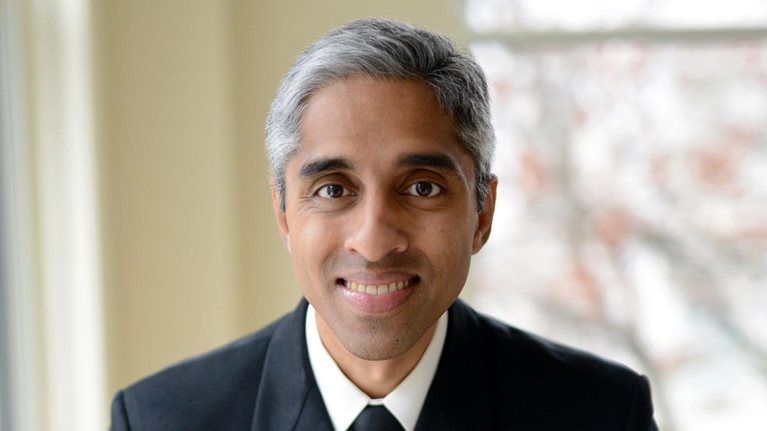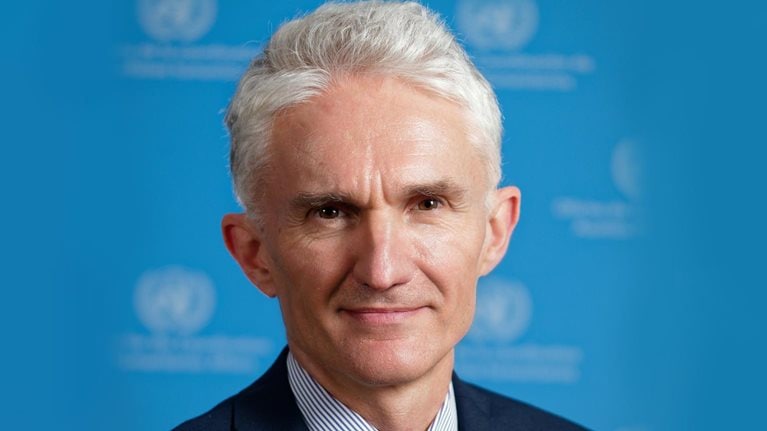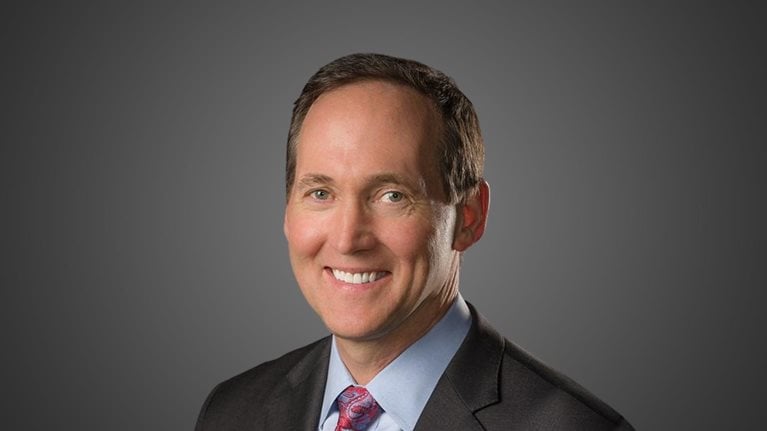Lisa Wieland took on the role of CEO of Massachusetts Port Authority (Massport), which includes Logan International, Worcester Regional, and Hanscom Field airports, along with public terminals in the Port of Boston, in the summer of 2019. At the time, “we were seeing unprecedented growth across all our business lines,” Wieland told McKinsey’s John Chartier and Justine Jablonska in a recent interview. But when the COVID-19 pandemic hit, “all of that changed within a matter of days.”
Wieland oversees an organization with a prepandemic budget of more than $900 million. In 2019, the total passenger volume for Boston’s Logan Airport was 42.5 million; in 2020, that number has gone down by 68 percent. Wieland spoke about her experience in leading her team through the chaos of the pandemic’s earliest days, what changes and updates passengers can expect when they visit airports today, and why it’s important for her to embody the flexibility she expects from her teams. The following is an edited version of her remarks.
‘The contactless passenger journey is here to stay’
We’ve been thinking for a long time about how to improve customer experience and the passenger journey. The COVID-19 pandemic has accelerated some of those plans. We had to migrate toward contactless [journeys], from how people get to and from the airport to checking in without any paper or, potentially, with a biometric [i.d.] to board the plane. That also means implementing contactless payment methods and working with our concessions to roll out services where you can have food and beverages delivered to you right at your gate.
It parallels some of what the airlines are doing, so that when you arrive at the airport, your touchpoints are reduced.
COVID-19 has brought about an acceleration of digital competency across demographic cohorts. We have a lot of different people who fly through the airport. We are constantly thinking about the experience we present to them. And if people have become more technology savvy, more digitally competent, that means we can accelerate and roll out the contactless passenger journey across many platforms—and there will be an acceptance of and a desire for them.
A very tangible example is way finding, which is something lots of people need help with at the airport. So let’s start with my mother, for example. My mother would seek out a person to get that information. She’d want to find a public-service representative to tell her how to get from point A to point B. Me, I’d probably pull up my phone and do a search, or I’d go to the airport website. My daughter would pull out her phone and say, “Hey Siri, how do I get from here to there?”
We’re thinking about our ability to implement these kinds of contactless options in the airport for a wide variety of our passengers. We’ve recently gone to a virtual public-service-representative model with voice commands on a lot of our digital screens instead of touch technology—all in an effort to reduce touchpoints and create a safer and healthier environment.
We can do more, and we can do it sooner, if there is greater receptivity to those options and an actual desire for us to implement them.
We’ll be continually evolving the contactless passenger journey, and it will change throughout the pandemic and beyond. There will be more contactless options for passengers throughout the entire journey: from the point at which you leave your home to the point at which you arrive at the airport and go through the check-in and security processes, all the way through to the boarding process. I would expect all of these changes to endure.
‘People can expect a different environment at the airport’
Airports and airplanes are cleaner than they’ve ever been and will continue to be that way because it’s important for restoring confidence in air travel. We expect the new hygiene and enhanced-cleaning protocols we’ve implemented to continue. Passengers can expect that from airports and airlines going forward.
We’ve redesigned TSA checkpoints and baggage claim to allow for greater physical distancing. We’ve done the same in hold rooms, marking off certain seating areas and also creating spaces so that families can sit together. When they come to the airport now, people should certainly expect to be compliant with wearing face masks. We’ve also had a lot of conversations about COVID-19 testing, which will be a part of the answer. We recently opened a new presecurity testing site in Terminal E for airport workers and travelers as a convenient option to ensure health and comply with various travel orders that are in place domestically and internationally.
How people are getting to the airport is different. Prior to the pandemic, demand outpaced supply for our parking options. The use of car and taxi services was skyrocketing, and we were making significant investments in high-occupancy-vehicle alternatives to reduce congestion on Logan’s roadways as well as the gateways to the airport. Now, we’re finding more people are being picked up and dropped off by family or friends, as opposed to coming in their own vehicles or taking an Uber, Lyft, or taxi to get here. We’ll need to adjust our ground-transportation strategy as travelers change how they get to and from Logan.
One of our greatest strengths is the fact that we have really strong relationships and great communication with all our business partners, starting, of course, with the airlines—but also with all the federal agencies that operate here and our concessions. That started nearly 20 years ago on 9/11, when we began what we call our “8:30 security meeting.” It was a way to bring the entire airport community together to talk about security-related issues. Today, we continue to bring the entire airport community together every single day of the week. That’s been critical not only to communicate about safety- and security-related issues but also, in the case of the pandemic, to communicate about the things we’re doing and our partners are doing to ensure the safety, health, and security of the traveling public and our workers.
One of our greatest strengths is that we have really strong relationships and great communication with all our business partners.
‘One of my lessons learned is to value flexibility and agility’
When I think back to those early days [of the pandemic], the data was changing rapidly. It’s not that the data was changing weekly or daily. It was changing hourly. We would be making decisions, and two hours later new information would emerge that would potentially alter decisions we had to make. In situations like this crisis, where, frankly, there was no playbook anyone could turn to for all the right answers, I had to communicate to my team that they had to be adaptable and flexible. And that everything was going to change very quickly.
We were very intentional with our communication across the organization—to our unionized workforce, management, all levels. We tried to be transparent and authentic and to be up front with people about the reality of the situation.
It was important for me as a leader to admit, look, we may not always get this right the first time, but what we will do is be analytical in our thought process and assess each decision we make. And we’ll adapt quickly as the information changes. That’s important for leaders in a crisis because oftentimes people expect that you’re going to have all the answers and that you’re going to get it right 100 percent of the time out of the gate. I myself have had to adapt as a leader. I have to embody that flexibility if I’m going to expect that from my teams.
Our organization is somewhat uncomfortable with not getting things right the first time. You have to do a risk assessment on where you can take some of those risks—where you might be able to try things, and if you don’t get it right, it’s recoverable. And then assess what are the things that are so critical you cannot get them wrong. We have a good understanding and are very clear on those priorities and what our risk tolerance is. Given our history with the events of September 11th, for example, the safety and security of our critical transportation facilities is our number-one goal. If we do nothing else, we have to get that right.
We’re focused on agility, particularly around our capital investments. We have these major strategic projects that cost hundreds and hundreds of millions of dollars, and they are important in aiding in the recovery. But there are so many uncertainties, including our own financial situation. How long will this pandemic last? What will our business partners want and need? What will the industry look like in the future? We’re methodical before we do anything, but this crisis has shown us that we can’t always operate in the same old ways. Sometimes we have to act and figure out in real time if we got it right. And if we didn’t, quickly move on and adapt. That takes a different mindset. We’re working on that, and everyone is doing a good job getting there. I think we will emerge as a more flexible, agile organization over the next few months and years.
Looking back, the advice that I would give myself—knowing what I know now—is that this is a marathon, not a sprint. I would tell myself: prepare yourself and your teams for the marathon and be ready for the course to change.
Comments and opinions expressed by interviewees are their own and do not represent or reflect opinion, policy, position, or endorsement of or by McKinsey & Company.


